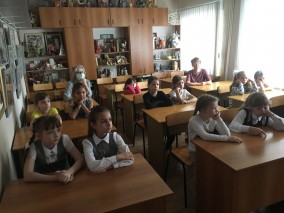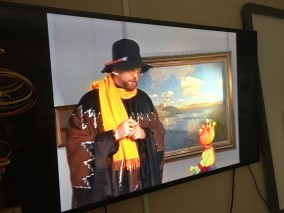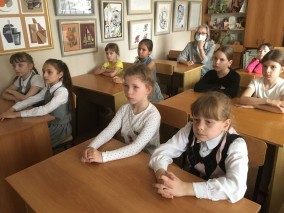Isaac Levitan was born near the Lithuanian railway station Kybarta into an educated but poor Jewish family. His father Ilya Levitan - a rabbi by education - left the religious path and became a teacher of foreign languages, worked as a cashier and controller at railway stations. The family, which had four children (two boys and two girls), lived very poorly. In search of a better life, the Levitans moved to the outskirts of Moscow in the late 1860s. However, even in Moscow, my father did not manage to find a permanent place: he was interrupted by private lessons. Despite the difficulties, the parents did not object when their sons entered the Moscow School of Painting, Sculpture and Architecture.
The years of study were not easy. Levitan recalled: “There is no need to imagine very rosy the prospect of studying painting. How much grief, effort, work and disappointment, until I got out on the road. " In 1875, the mother of the future artist died, and two years later his father passed away. The teachers tried to help the talented young man. They gave out cash benefits, brushes and paints.
At the school, Isaac Levitan made friends with Konstantin Korovin, Mikhail Nesterov, Alexei Stepanov. His teachers were Vasily Perov and Vasily Polenov, the teacher Alexei Savrasov had a great influence on the young artist. It was his instruction - "write, study, but most importantly - feel!" - Isaac Levitan made the motto of his work. Already in the late 1870s, Levitan began to paint his "mood landscapes", in which he not only depicted nature, but also expressed his own feelings. At a student exhibition in 1880, Pavel Tretyakov bought Levitan's painting Autumn Day. Sokolniki ". Four years after this, Isaac Levitan's paintings were accepted by the Association of Traveling Art Exhibitions, and Tretyakov followed the artist's work all the time and often acquired his works. Levitan stopped attending the school, soon he was expelled and was not given the title of "class artist".
In 1898, the Academy of Arts awarded Isaac Levitan the title of academician of landscape painting. He began to lead a landscape workshop at the Moscow School of Painting, Sculpture and Architecture, where he once studied himself. At the end of May 1900, Levitan caught a bad cold, and a month later the artist was gone. All summer, his paintings were exhibited in the Russian Pavilion at the World Exhibition in Paris, and 40 unfinished paintings and several hundred sketches remained in Levitan's studio.
Pupils of elementary grades of the Children's Art School No. 1 named after V.E. Tatlin watched a film from the collection of the Russian Museum about the history of the artist's life and works.
tags cloud
- #opening_of_a_branch
- #lecture
- #exhibition
- #virtual_exhibition
- #virtual_tour
- #online_exhibition
- #мультимедийная_выставка
- #poster_exhibition
- #online_event
- #masterclass
- #contest
- #занятие
- #festival
- #video_conference
- #round_table
- #conference
- #seminar
- #дошкольники
- #школьники
- #студенты
- #семья
- #серебряный_возраст
- #инклюзия
- #multimedia
- #Business_meeting_of_virtual_brances
- #The_Multimedia_Centre
- #Drammatika
- #деньмузеевВФРМ
- #ночьмузеевВФРМ
- #RussianMuseum130
- #RussianMuseum125
- #RussianMuseum120
- #RMcatalogues
- #Библионочь
- #книгиГРМ2019
- #игрыРМ
- #фильмыРМ
- #ночьискусствВФРМ
- #Artefact
- #100years_restorationRM
- #Peter_I_350
- #Antarctica200
- #folk_art
- #profession_restorer
- #RM_anniversary
- #SPb_anniversary
- #80летПобеды


